The Marzeah Amos Denounces—Using Archaeology to Interpret a Biblical Text
034
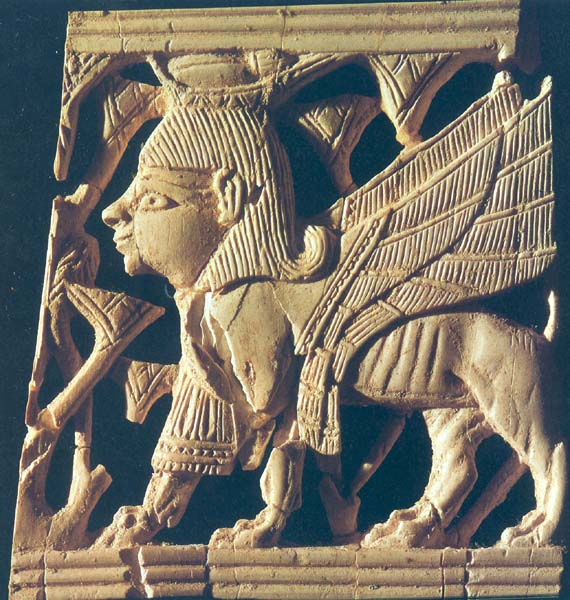
Archaeologists often accuse Biblical scholars of ignoring archaeological materials that could significantly illuminate the Biblical texts that scholars are studying. As one archaeologist recently put it: “Most [Biblical] commentators do not even make use of archaeology where it can contribute best, namely in illustrating the material culture of a given period, either in general or in terms of a specific reference in the [Biblical] text.”1
For the most part, archaeology remains the great untapped resource in Biblical studies, despite the fact that the Bible and archaeology are so closely related.
As BAR readers know, there is a great deal of dispute concerning the term “Biblical archaeology.”a I still find Albright’sb definition satisfactory: Biblical archaeology, he said, “is the systematic analysis or synthesis of any phase of biblical scholarship which can be clarified by archaeological discovery.”2
Biblical archaeology is, therefore, a Biblical, not an archaeological, discipline. It is the responsibility of Biblical scholars, not archaeologists, to ferret out pertinent material evidence and apply it to the Bible.
There is a crying need for synthesizing works that bring archaeological data to bear on the Biblical text.
Correlating archaeological data with the Biblical record is not so easy as it sounds, however. The process is complicated by the fact that the artifacts are often mute and ambiguous, while the Biblical text is sometimes tendentious and unintelligible.
Nonetheless, archaeological evidence can contribute to the understanding of the Biblical text by confirming, correcting and supplementing it. The Biblical text itself, of course, must be analyzed using the methods of literary criticism, form criticism and tradition criticism.
In recent years, archaeologists have utilized increasingly sophisticated methods of research, often borrowed 035from the natural and social sciences (anthropology in particular), making it possible to go far beyond their earlier preoccupation with political history. No longer are archaeologists concerned exclusively with bare facts like kings, wars and conquests; they have turned their attention to social history as well. They have become absorbed with all aspects of daily life in ancient Israel, including religion, politics, economics, trade, living standards and social structure.
I would like to illustrate how these developments in archaeology can be applied to a Biblical text by taking an example from the book of Amos, an eighth-century B.C. prophet who was a herdsman and a dresser of sycomore trees. Although he came from the village of Tekoa, south of Jerusalem, he preached in the northern kingdom of Israel, where he was associated with the capital city of Samaria and with the royal sanctuary at Bethel. Acknowledging the universal sovereignty of Israel’s God, Amos was vitally aware of political events in the bordering nations, as well as in Israel. Active during the peaceful and prosperous reigns of King Uzziah of Judah (783–742 B.C.) and King Jeroboam II of Israel (786–746 B.C.), Amos appears to have exercised his prophetic ministry for only a short time. He was a rugged outdoorsman who preached divine judgment with harsh severity. Influenced by the Mosaic covenant that was based on responsibility and not on privilege, Amos was deeply disturbed by the rampant social 036injustices of his people, especially the venal upper classes. Wealth had created a social imbalance, resulting in two distinct classes, the rich and the poor.
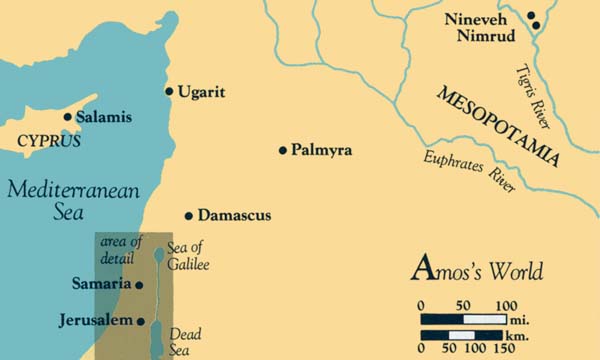
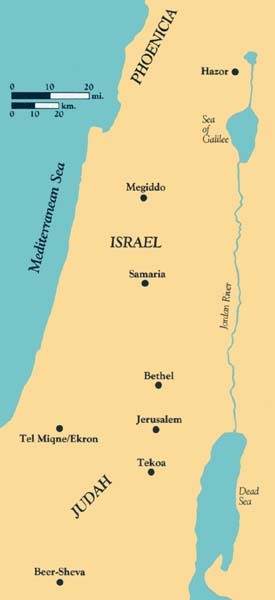
Here is the text I want to analyze with the help of archaeology:c
“Woe to those who lie upon beds of ivory, and stretch themselves upon their couches, and eat lambs from the flock, and calves from the midst of the stall; who sing idle songs to the sound of the harp, and like David invent for themselves instruments of music;d who drink wine in bowls, and anoint themselves with the finest oils, but are not grieved over the ruin of Joseph! Therefore they shall now be the first of those to go into exile, and the revelry [
marzeah ] of those who stretch themselves shall pass away” (Amos 6:4–7, Revised Standard Version).
This passage is one of Amos’s most famous sermons on the doom of the northern kingdom of Israel and its luxury-loving society in the eighth century B.C. The specific object of his indictment is the
Few social institutions in antiquity have been so illuminated by archaeology as the
The
The purpose of the funerary aspect of the
The passage from Amos that I have quoted is clearly a description of a
Other than this reference in Amos, the only other specific Biblical reference to a
“For thus says the Lord: ‘Do not enter the house of mourning [
beth marzeah ], or go to lament, or bemoan them. … No one shall break bread for the mourner, to comfort him for the dead; nor shall anyone give him the cup of consolation to drink for his father or his mother. You shall not go into the house of feasting to sit with them, to eat and drink” (Jeremiah 16:5, 7–8).
Although the term
“When Phinehas the son of Eleazar, son of Aaron the priest, saw it, he rose and left the congregation, and took a spear in his hand and went after the man of Israel into the inner room, and pierced both of them, the man of Israel and the woman, through her body” (Numbers 25:7–8).
In denouncing those who indulged in the
The first element of the
Always a luxury item, ivory has a long and fascinating history in the Near Easte The principal source of commercial ivory was the elephant, the two main species being the African and the Asian (the Asian is sometimes incorrectly identified as the Indian elephant). The African elephant is the larger of the two. Weighing as much as six tons, its tusks average 6 feet in length; a pair may weigh 100 pounds. The Asian elephant is smaller, and only the males have tusks, averaging 5 feet in length, with a pair weighing about 70 pounds. A subspecies of the Asian elephant is the Syrian elephant, which became extinct after the eighth century B.C. However, it may have been the principal source of ivory for the Phoenicians and Syrians, who supplied the Canaanites and Israelites.
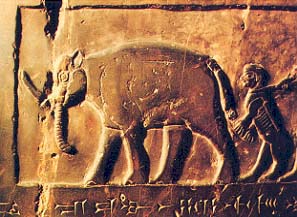
Ancient texts often refer to elephants, but there are no references to elephants in the Bible. Assyrian and Egyptian sources of the 15th century B.C. mention elephant hunts in North Syria. Pharaoh Thutmose III (1490–1436 B.C.) described a hunt in which 120 elephants were killed for their ivory. The famous Black Obelisk of the Assyrian monarch Shalmaneser III (859–825 B.C.) bears a classic depiction of an Asiatic elephant.
According to an Assyrian record, King Hezekiah (715–687 B.C.) of Judah sent ivory as tribute to Sennacherib of Assyria when Sennacherib invaded Judah and besieged Jerusalem in 701 B.C. Listed among Hezekiah’s items of tribute are inlaid ivory couches, ivory armchairs, elephant hides and tusks.
039
The gradual disappearance of elephants in the ancient Near East was the result of extensive cultivation of the land where the elephants lived and of increased killing of elephants because of the increased demand for ivory.
There were at least two, perhaps three, schools of ivory carving in Biblical times. One was in North Syria, another was in Phoenicia and perhaps a third was in South Syria.
Thousands of ivories have been found at Nimrud in northern Assyria (present day Iraq). These ivories were carved in North Syrian style, which reflects a Canaanite-Mycenaean tradition. They may have been brought to Nimrud as booty, or the artisans who made them may have been taken to Assyria as part of the transfer of populations.
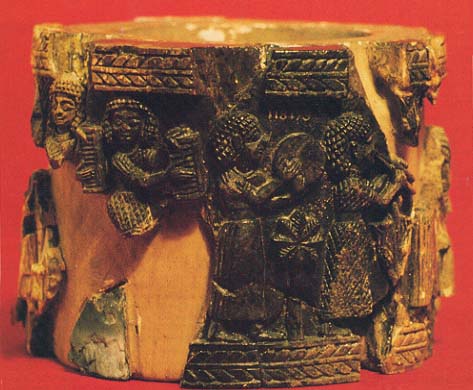
The motifs decorating Phoenician ivories, on the other hand, are clearly of Egyptian inspiration. Here, Egyptian traditions of art and mythological symbolism have been adapted to Canaanite-Phoenician themes. The ivories of ancient Israel were crafted by Phoenicians.
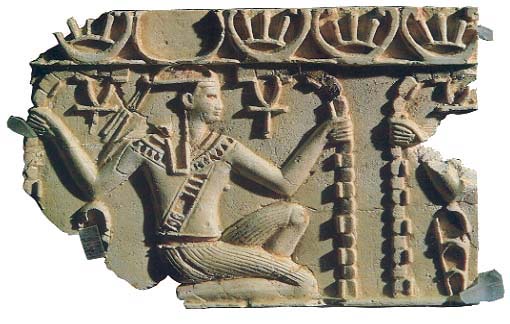
The distinctions between the Syrian and Phoenician styles have been summarized as follows:
“Syrian-style ivories may be characterized by a greater sense of action, by squatter, more powerful proportions, and by more highly charged compositions, compared with the more quiescent, elegant, and slender figures harmoniously disposed in space, of the contemporary Phoenician Style.”4
In ancient Israel, the most significant collections of ivories have been recovered at Megiddo and Samaria. At Megiddo, over 300 ivory fragments, dating from the beginning of the Iron Age (12th century B.C.), came from the palace’s treasury room. Samaria yielded over 500 ivory fragments, which are more pertinent to understanding the passage from Amos because they date to the ninth century or eighth century B.C. (probably the latter). The Egyptian motifs decorating these ivories point to a style originating in Phoenicia. Since the motifs are Egyptian, and the presentation, Phoenician, 040we can infer that they came from Phoenicia. Egyptian symbolism on the Samaria ivories includes various deities, such as Horus, Ra, Heh, Isis, Nephthys and Osiris. These Egyptian motifs have been taken over and adapted by the Phoenicians, who were the conduits of most things Egyptian in the region.
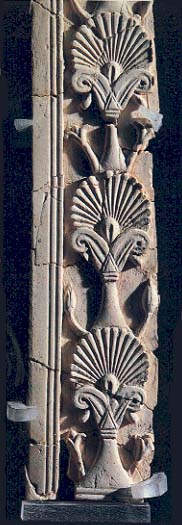
The pagan symbolism adorning the Samaria ivories may well have outraged Amos as much as the luxury and affluence that the ivories reflected.
In his graphic description of the
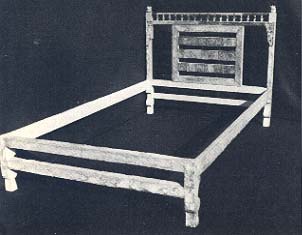
Ancient ivories thus provide a vivid illustration of the “beds of ivory” that Amos abhorred.
The next element in the
This phrase refers to stall-fattened, tender calves. The Hebrew word for “stall” (marbeq) designates an enclosure where animals were restrained for fattening. A recent study of the tripartite public buildings at Megiddo, Beer-Sheva, Hazor and elsewhere has concluded that they were constructed as stables, specifically for the housing and conditioning of war-horses.6 John S. Holladay, the author of the study, is convinced that horses were kept in stables, not in open enclosures, in the ancient Near East. Building on Holladay’s study of public stables, Lawrence E. Stager has convincingly argued that domestic stables were located within, not separate from, domestic dwellings.7 These houses had a central room and side rooms with ceilings supported by pillars. Troughs for feeding the animals were constructed between the pillars. In short, the ground floor of the covered side-rooms of these houses served as domestic stables.
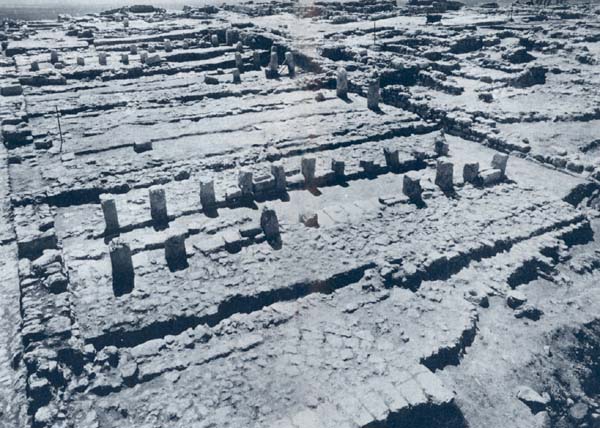
This background is useful for understanding several 041Biblical references to “calves from the midst of the stall” or fatted calves. When King Saul consulted the witch of Endor, for example, she served him a meal consisting of a stall-fed calf that she had “in the house” (1 Samuel 28:24). The “prodigal son” was served the same delicacy when he returned to his father’s house (Luke 15:23–27).
Eating “calves from the midst of the stall” was for Amos but another example of profligate feasting by the overly affluent residents of Samaria.
Turning to Amos’s reference to “the sound of the harp,” we know that music played a vital role in the life of ancient peoples. From archaeology, we also know a great deal about the instruments they used.f But the Bible mentions only two stringed instruments, the nebel and the kinnor. Frequently, they are named together. They are both lyres. The nebel was larger and perhaps the more solemn instrument, intended for liturgical use. The kinnor, unlike the nebel, is asymmetrical. Both have a body, two arms and a yoke (or cross bar), but in a kinnor the arms are of unequal length. Utilized for both sacred and secular purposes, the kinnor was the instrument of David and the Levites.
In describing the musical component of the
A beautifully crafted seal, dating from the seventh century B.C., bears the tantalizing Hebrew inscription: “(Belonging) to Macadanah, the king’s daughter.” This is the first occurrence in Israel’s history of the name Macadanah, derived from a Hebrew root meaning “delight”; she is not further identified, nor is her father, 042the king. What makes this tiny scaraboid (beetle-shaped) seal of brown jasper especially memorable is the delicate design of a kinnor that decorates it. The lyre is asymmetrical, consisting of a soundbox and two unequal arms, with 12 strings attached to a yoke. A string of pearls adorns the outer edge of the soundbox, with a rosette in the center. The king’s daughter perhaps chose the lyre as her emblem because she played this instrument.
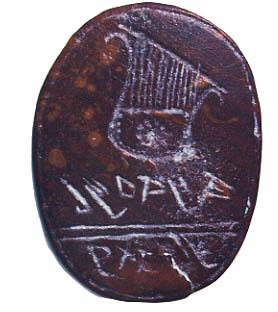
A poignant representation of three lyre-players also appears on an Assyrian relief from Nineveh commemorating Sennacherib’s conquest of the Judahite city of Lachish in 701 B.C. These Judahite prisoners of war are depicted playing their lyres on their way to Assyrian captivity under the watchful eye of an Assyrian soldier armed with a club and a bow.
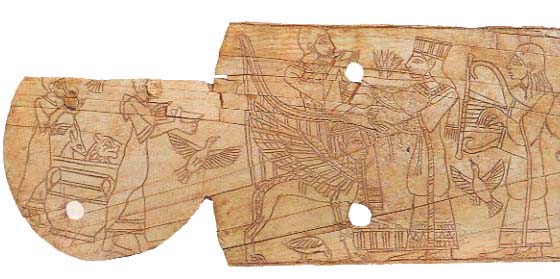
With this background, we can easily picture the celebrants at the
Inordinate consumption of wine is enumerated as the fourth element of the
For example, in the description of the altar of burnt offering, we are told: “You shall make pots for it [the altar of burnt offering] to receive its ashes, and shovels and basins [mizraq] and forks and firepans; all its utensils you shall make of bronze” (Exodus 27:3).
Amos may have referred to sacred vessels at the
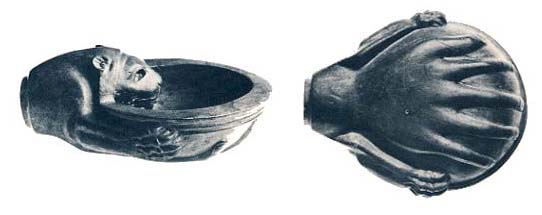
A fluted bronze bowl (phiale) with a Phoenician dedicatory inscription may cast light on the kind of drinking container used in the
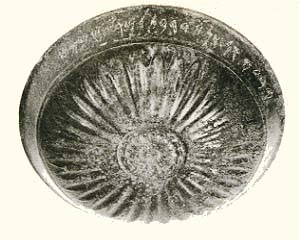
The final element we shall examine in the quotation from Amos is the reference to anointing with “the finest oils.”
Mentioned more than 200 times in the Bible, olive oil was both a necessity of life and a gift of God. Second in importance only to the production of wine, oil was 044a major industry in ancient Israel and a significant export to such regions as Egypt and Mesopotamia, which did not cultivate olives. Alluding to the prosperity of the oil merchants, Hosea tells us: “They make a bargain with Assyria, and oil is carried to Egypt” (Hosea 12:1).
The many stone olive-presses found recently in surveys and excavations in modern Israel, at such sites as Tel Miqne (Ekron), Tel Batash (Timnah) and Tel Dan (Dan), add substantially to the large number of olive presses previously known.
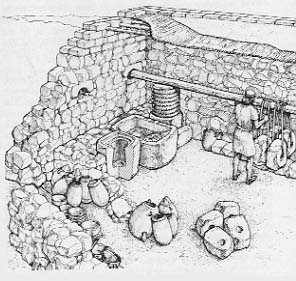
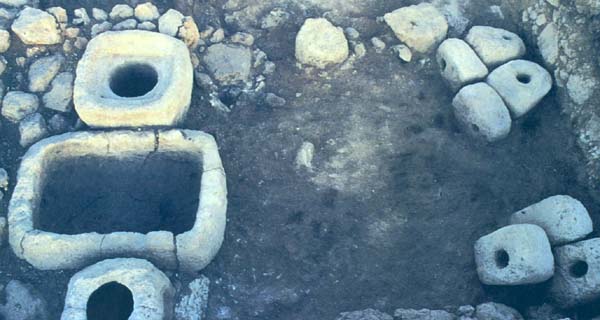
Olive oil had multiple uses in Biblical times: in food preparation, as an unguent for softening the skin, in offering sacrifices, as fuel for lamps, for medicinal purposes, for the preparation of cosmetics and as a lubricant.
Olive trees, still plentiful in the Mediterranean region, can survive for a thousand years. The principal predator of the olive tree is the locust. As Amos notes: “The locust devoured your fig trees and your olive trees” (Amos 4:9).
Two separate processes are involved in the extraction of olive oil—crushing and pressing. Crushing consists of grinding the olives into a soft paste. This is done by rolling a large stone (the crushing stone, or memel) over the olives spread on a flat surface of rock or on the floor of a shallow basin (yam). Alternatively, this can be accomplished by treading or trampling the olives, as mentioned in Micah 6:15.
To extract the oil, this pulp must then be pressed; this is done by placing the crushed olives in woven baskets (aqalim) that have holes in the bottom. The baskets are placed on the pressing surface, and pressure is exerted on the olives by a long beam weighted with stones and secured in a wall-niche behind the press. The olive oil then flows through the basket openings into a groove, then through this channel in the rock to a central vat or bowl. This kind of oil press was used throughout Iron Age II (1000–586 B.C.).
More than 100 oil presses have recently been found at Tel Miqne, identified with the Philistine city of Ekron, near the Mediterranean coast of Israel. This must have been one of the most important olive-oil production centers in the Near East in the seventh century B.C. Most of the presses recovered at Tel Miqne were equipped with larger-than-usual pressing surfaces and central collecting basins, so that they would produce more than twice as much oil as the simpler, smaller presses.
The initial crushing, done in a vat prior to the pressing process, yields the finest quality oil; this prepressed oil, also called virgin oil, is the best. Lawrence E. Stager explains the “finest oil” used in the
This was the oil with which the dissolute celebrants at the
Amos, the great prophet of social justice, targeted three realms of daily life for egregious violations of covenant responsibility: injustice in the courts, luxury among the upper class and worship in the sanctuary. The poor were denied their rights in court. The affluence of the rich was the direct result of their exploitation of the poor. Worship was form more than substance; consequently, conduct in the marketplace was totally unaffected by worship in the holy place. Amos spoke from the conviction that social justice is an integral part of the Mosaic covenant, which regulates relations not only between God and people, but also among people. Amos went so far as to say that the “day of the Lord,” supposedly a day of reward and vindication, would be instead a day of destruction. Nonetheless, although the hour was late, Amos preached that there was still time for individual reorientation of life, or in his vocabulary, teshubah.
The Biblical text often gives only sketchy descriptions of articles of everyday life. Archaeology, as in Amos’s description of the
We have focused here on just a few details, but a more comprehensive study would also provide information about the development of a variety of agricultural practices and of trade and industry, relating to pottery, wine, and metalworking, as well as to oil production. All of these elements helped create the pyramidal social structure in Israel that the prophets inveighed against so vehemently.
Archaeologists often accuse Biblical scholars of ignoring archaeological materials that could significantly illuminate the Biblical texts that scholars are studying. As one archaeologist recently put it: “Most [Biblical] commentators do not even make use of archaeology where it can contribute best, namely in illustrating the material culture of a given period, either in general or in terms of a specific reference in the [Biblical] text.”1 For the most part, archaeology remains the great untapped resource in Biblical studies, despite the fact that the Bible and archaeology are so closely related. As BAR readers know, there is a great deal […]
You have already read your free article for this month. Please join the BAS Library or become an All Access member of BAS to gain full access to this article and so much more.
Already a library member? Log in here.
Institution user? Log in with your IP address or Username
Footnotes
See the following BAR articles by Hershel Shanks: “Should the Term ‘Biblical Archaeology’ Be Abandoned?” BAR 07:03; “Whither ASOR?” BAR 09:05; “Dever’s ‘Sermon on the Mound,’” BAR 13:02; and see the letters by William G. Dever in Queries & Comments, BAR 07:05, and Queries & Comments, BAR 13:04.
William F. Albright, who died in 1971, was the doyen of an earlier generation of Biblical archaeologists. He was a master of both Bible and archaeology.
This example is adapted from my forthcoming volume, Amos, Hosea, Micah—An Archaeological Commentary (Philadelphia: Westminster Press, 1988).
On this clause, see David Noel Freedman, “But Did King David Invent Musical Instruments?” Bible Review, Summer 1985.
See Hershel Shanks, “Ancient Ivory—The Story of Wealth, Decadence and Beauty,” BAR 11:05.
See Bathja Bayer, “The Finds That Could Not Be,” BAR 08:01.
Endnotes
William F. Albright, “The Impact of Archaeology on Biblical Research—1966,” in New Directions in Biblical Archaeology, ed. David Noel Freedman and Jonas Greenfield (Garden City, NY: Doubleday, 1971), pp. 3–4.
Jonas Greenfield, “The Marzeah
I. Winter, “Ivory Carving” in Ebla to Damascus: Art and Archaeology of Ancient Syria, ed. H. Weiss (Washington, DC: Smithsonian Institution, 1985), pp. 343–344.
See Vassos Karageorghis, Salamis in Cyprus (London: Thames and Hudson, 1969), pp. 76–98, and Excavations in the Necropolis at Salamis, vol. 3 (Nicosia, Cyprus: Dept. of Antiquities, 1973).
John S. Holladay, “The Stables of Ancient Israel,” in The Archaeology of Jordan and Other Studies, ed. Lawrence Geraty and Lawrence Herr (Berrien Springs, MI Andrews University, 1986), pp. 103–165.
Lawrence E. Stager, “The Archaeology of the Family in Ancient Israel,” Bulletin of the American Schools of Oriental Research 260 (1985), pp. 1–35.
Nahman Avigad and Jonas Greenfield, “A Bronze phiale with a Phoenician Dedicatory Inscription,” Israel Exploration Journal 32 (1982), pp. 118–128.
